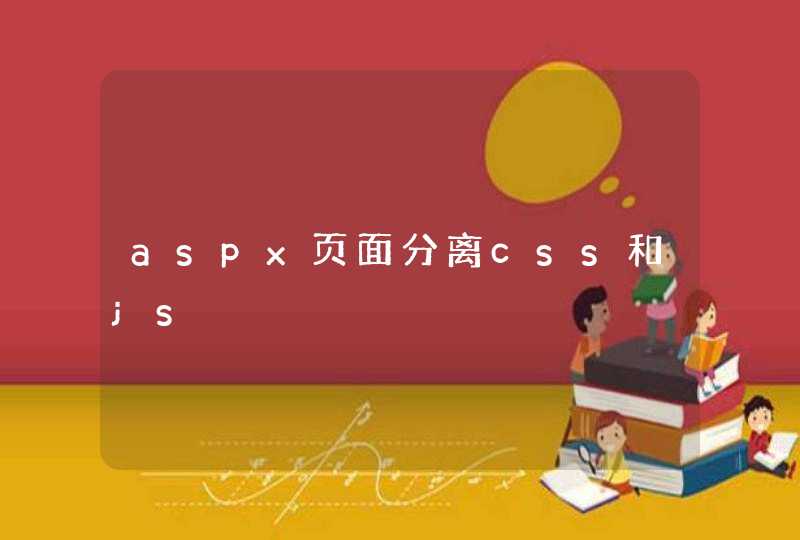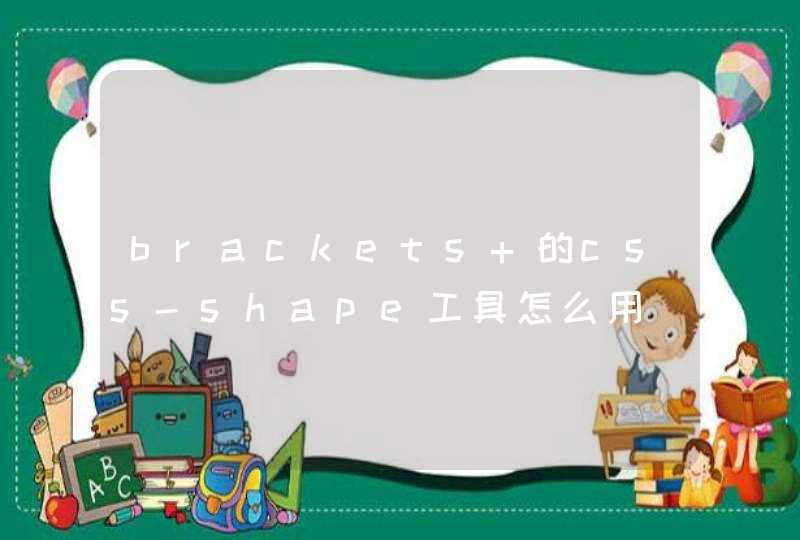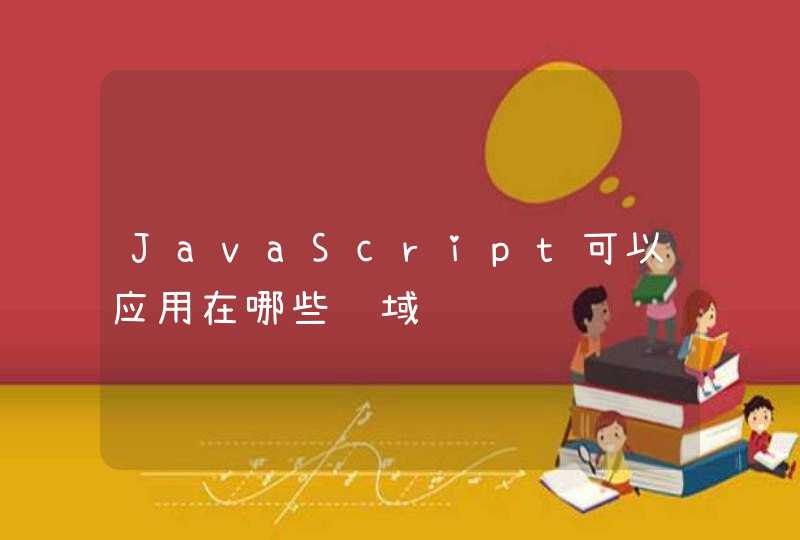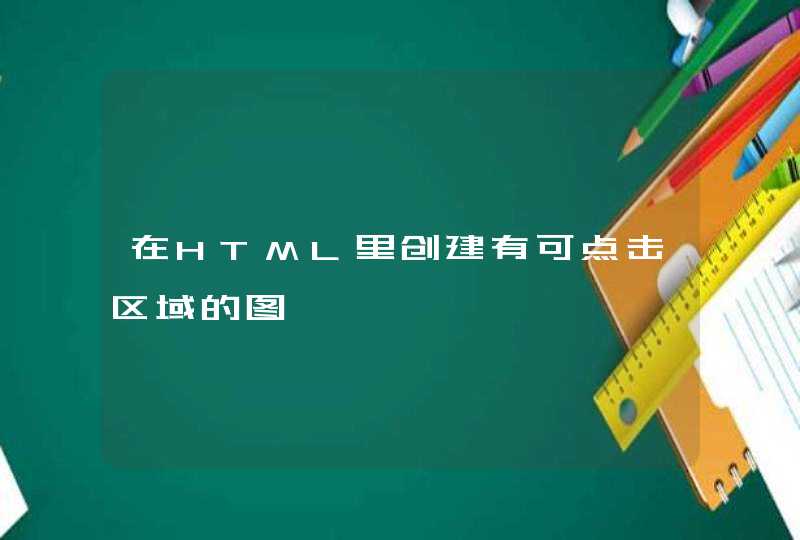
MarginalCost,意思是短期边际成本。SMC=dSTC/dC
LAC即是LongAverageCost指长期平均成本。LAC=LTC/C.两者定义完全不同啦
SAC是一个命令驱动的程序,命令行可以在终端或者宏文件中执行。SAC命令可以分为三大类:参数设置,命令执行和数据设置操作。
SAC2000可在任何时候使用INICM命令重新初始化。
地震数据信号都被存储在单独的数据文件中,每个数据文件都包含了一个头文件用以描述文件的内容。
可以使用READ命令把地震信号从磁盘中读入内存,CSS3.0格式的可以使用READCSS命令。SAC可以同时处理多达200道的地震信号
请问经济学中的SMC.SAC表示什么意思?
经济学中的SMC表示短期边际成本,SAC表示短期平均成本。短期边际成本是指在短期内,厂商每增加一单位产量所引起的总成本的增加量。边际成本是由于额外投入导致的成本增量,边际成本可能会先减后增,因为最开始增加投入可能提高工作效率,但随着投入越来越多效率会逐渐降低。边际成本最终呈上升趋势,因为边际产量最终是下降趋势。
短期平均成本是短期内生产每一单位产品平均所需要的成本,平均成本曲线是U型的,在低产量水平,平均成本高,随着产量的增加,平均成本下降。平均成本曲线先降后升,在平均成本U型曲线最低点,实现平均总成本最低,这种产量被称为企业的有效规模。
计算短期边际成本就是总成本等于固定成本加可变成本。总成本的变化将是生产任何额外单位后的新总成本减去生产单位前的总成本。计算数量的变化。为此,只需从新数量中减去原始数量。对于许多边际成本计算数量的变化将等于1。划分由数量变化计算的总成本变化,以找出短期边际成本。
短期边际成本的变动规律与短期平均成本的变动规律相似,也先随产量增加而降低,达到一定规模后开始增加。只不过它达到最低时的产量比短期平均总成本及平均变动成本的较小,在平均总成本与平均变动成本达到最低点时,短期边际成本等于短期平均成本。
两个都是英文版的。编程语言和软件历史年表大全
Year - Languages, Operating Systems, Major Programs, Etc.
1945 EDVAC utilizes stored program concept
1945 Plankalkul (Konrad Zuse)
1949 Short Code (for BINAC) (John Mauchly)
1950 Intermediate Programming Language (Arthur W. Burks)
1951 Klamemerausdrucke (algebraic language and compilers)
1951 Formules (complete compiler) (Heinz Rutishauser)
1951 Find (for the Whirlwind) (Jack Gilmore)
1952 Autocode compiler (Alick E. Glennie)
1952 Short Code (for UNIVAC 1) (W.F. Schmidt, A.B. Tonik, J.R. Logan)
1952 Sort-Merge Generator (for UNIVAC 1) (Betty Holberton)
1952c COMPOOL (for SAGE) (MIT)
1952 Punchy (for TX-O) (Jack Gilmore)
1953 A-2 Compiler (for UNIVAC) (Grace Hopper)
1953 Algebraic interpreter (for Whirlwind, MIT) (J.H. Laning, N. Zierler)
1953 Speedcoding (for IBM 701) (John Backus)
1954 Operating System (for IBM 701, General Motors Research Laboratory)
1954 Autocode (for Manchester Mark 1) (R.A. Booker)
1954 PiPi-2 Prgrmg Program (compiler, USSR) (E.Z. Liumbimskii, S.S. Kamynin)
1954c Autocoder assembly language (for IBM 705)
1955 PiPi Programming Program (for BESM) (USSR)
1955 BACAIC (for IBM 701) (Mandalay Grems, R.E. Porter, Boeing Airplane Co.)
1955 MATH-MATIC mathematical programming language (for UNIVAC) (C. Katz)
1955 Kompiler 2 (for IBM 701) (A. Kenton Elsworth, Livermore Laboratory)
1956 Operating Sys. (for IBM 704) (General MotorsNorth American Aviation)
1956 ADES (U.S. Naval Observatory) (E.K.Blum)
1956 APT machine tool control (MIT) (Douglas Ross)
1956 Logic Theorist AI program (A. Newell &H. Simon, Carnegie Institute)
1956 IT (Internal Translator) (for IBM 650) (A. Perlis &J.W. Smith)
1956 Mark I report generator (for IBM 702) (General Electric-Hanford)
1956 FORTRAN (Formula Translation) (John Backus, IBM)
1957 Mark II Report generator (for IBM 702) (General Electric-Hanford)
1957 IPL-V (Information Processing Language V)
1957 Fortransit programming language
1957 COMIT string processing language (Victor Yngve, MIT)
1957 Scope Writer (for TX-2) (Jack Gilmore)
1957 Lincoln Writer (for TX-2) (Jack Gilmore)
1958 APT (Automatically Programmed Tool)
1958 FLOW-MATIC (for UNIVAC, Remington-Rand) (Grace Hopper)
1958c SOAP assembler (for IBM 650)
1958 IR (Information Retrieval) database management system (for IBM 704)
1958 LISP (List Processing language) (John McCarthy, MIT)
1958 AIMACO data processing language
1958 IPL V list processing language
1959 DYNAMO III
1959 TUFF/TUG (for IBM 704)
1959 9PAC file handling (for IBM 709)
1959 FACT business data processing language
1959 SURGE (for IBM 704) (Fletcher Jones)
1959 SAGE operating system (for IBM AN/FSQ7) (System Development Corp.)
1959c SAP assembler (for IBM 704)
1959c ASCI-Matic (Jack Minker)
1959 COBOL (December release)
1960 Atlas operating system for Atlas Computer)
(Manchester Univ. &Ferranti)
1960 ALGOL 60 (Algorithmic Language)
1960 COBOL (Common Business Oriented Language)
1960 JOVIAL (Jules Own Version of Int. Algebraic Language) (Jules Schwartz)
1960 MAD (Michigan Algorithm Decoder)
1960 NELIAC (Navy Electronics Laboratory International Algol Compiler)
1960 TRAC string processing language
1960 SCEPTRE
1960 IOCS operating system (for IBM 709/7090)
1960 FMS operating system (for IBM 709) (North American Aviation)
1961 COBOL revised and reissued
1961 SOS operating system (for IBM 709) (SHARE and IBM)
1961 GPSS (General Purpose Systems Simulator)
1961 SAC/Aids Formatted File System (for SAC 438L system) (SAC)
1961 BASE-BALL natural language system (B.V. Green)
1961 QUERY database (T. E. Cheatham, S. Warshall)
1961 RPG (Report Program Generator) (for IBM 1401)
1961 MADCAP scientific programming language
1961 ALGY formula manipulation language
1961 GECOM business data processing language
1961 QUICKTRAN on-line programming language
1961 Expensive Typewriter (IBM 360) (Stephen Piner)
1961 COBOL 61 Extended
1962 CTSS operating system (for IBM 7090 &IBM 7094) (Dr.F. Corbato, MIT)
1962 Gen. Info. &Retrieval System (GIRLS) for IBM 7090 (J.A. Postley, AIS)
1962 EXEC 1 operating system (for Univac 1107) (Computer Sciences Corp.)
1962 APL (A Programming Language) (Kenneth Iverson)
1962 IBSYS operating system (IBM 7090)
1962 Advanced Data Management System (ADAM) (for IBM 7030) (MITRE)
1962 COLINGO database (for IBM 1401)
1962 FORMAC formula manipulation
1962 SNOBOL (String Oriented Symbolic Language)
1963 Master Control Program operating system (for Burroughs B5000)
1963 COGO (Coordinate Geometry)
1963 Information Processing System (IPS) (for CDC 1604) (NAVCOSSACT)
1963 JOSS (Johnniac Open Shop System) (J.Cliff Shaw, Rand Corporation)
1963 CORC scientific programming language
1963 OMNIT AB scientific programming language
1963 Ambit
1964 Integrated Data Store (I-D-S) (Charles Bachman, General Electric)
1964 OS/360 operating system (for IBM 360)
1964 BASIC (Beginners All-Purpose Symbolic Instruction Code)
(John Kemeny, Thomas Kurtz, Dartmouth College)
1964 FORMAC (Formula Manipulation Compiler) for non-numeric mathematics
(Jean Sammet)
1964 PAT on-line programming language
1964 PL/1 (developed by IBM and SHARE)
1964 Altran
1965 Generalized Update Access Method (GUAM) (IBM 7010)
(developed by North American Space Division)
1965 Remote Access Terminal System (for IBM 7010)
(developed by IBM, and Rockwell International)
1965 Generalized Information System (GIS) (for IBM System/360)
1965 DENDRAL (Edward Fiegenbaum, Joshua Lederberg (Stanford University)
1965 C-10 database management system (IBM 1410) (developed by MITRE)
1965 COGENT report generator (for IBM 709)
1965 CPS on-line programming language
1965 RUSH on-line programming language
1965 Amtran on-line programming language
1965 FLAP formula manipulation programming language
1965 CLP list processing language
1965c MULTICS interactive operating system (for GE/Honeywell 645)
(developed by GE, Bell Labs &MIT)
1965 TRAC
1965 SNOBOL 3
1966 SIMULA I (Kristen Nygaard, Ole-Lohan Dahl) (First Object Oriented Language)
1966 TOSS operating system (for IBM System/360) (developed by RCA)
1966 Dialog on-line programming language
1966 MAP on-line programming language
1966 NAPSS scientific programming language
1966 Euler scientific programming language
1966 Coursewriter II
1966 OMNITAB II
1966 ECAP II (Electronic Circuit Analysis Program II)
1966 MPSX (Mathematical Programming System Extended)
1967 RAMIS non-procedural programming language (Mathematical)
1967 MANAGE database management system (for XDS 940 computer)
(developed by Scientific Data Systems)
1967 AS-IST database management system (for IBM System/360)
(developed by Applications Software)
1967 LUCID database management system (for AN/FSQ32)
(developed by System Development)
1967 ICES (Integrated Civil Engineering System)
1967 CSSL (Continuous Systems Simulation Language)
1967 Simula 67 (Simulation Language 1967)
1967 CPUL programming language
1967 POSE scientific programming language
1967 MAC-30 programming language
1967 DIAGMAG scientific programming language
1967 REDUCE formula manipulation language
1967 SPRINT list processing language
1967 LOLITA list processing language
1967 EOL-3 string processing language
1967 LEAP multipurpose programming language
1967 SNOBOL 4
1968 ALGOL 68 (Algorithmic Language)
1968 ATLAS (Abbreviated Test Language for "All" Systems)
1968 CSMP (Continuous System Modeling Program)
1968 Speakeasy
1968 OS/MFT operating system (for IBM 360 computers)
1968 TSS operating system (for IBM 360/370)
1968 MCP operating system (for Burroughs for B2500 and B3500)
1968 PAL programming language
1968 Proteus programming language
1968 GPL general purpose programming language
1968 TPS
1968 Salem
1968 Ariel
1968 Bruin
1968 TLC
1968 Termac
1968 Active Language 1
1968 Symbal
1968 Champ
1969 MUMPS (Massachusetts General Hospital General Utility
Multi-Programming System)
1969 PILOT
1969 CP-67/CMS operating system (for IBM 360 computer)
1969 OS/MVT operating system (for IBM 360 computer)
1969 Data Manager-1 (developed by Auerbach)
1969 UNIX multi-user, multitasking operating system development begun at Bell Labs
1969 Cobol Data Management System (CDMS) (for IBM 360)
(developed by Defense Intelligence Agency)
1969 Information Management System (IMS) hierarchical database management
system (developed by IBM)
1969 TSOS operating system (for Spectra 70/46) (developed by RCA)
1969 Time Shared Data Management System (TSDMS) (for IBM 360)
1969 Remote File Management System (for CDC 6000)
(developed at University of Texas)
1969 McG360 programming language
1969 DML programming language
1969 REL programming language
1969 PLANNER programming language
1969 REF-ARF programming language
1969 IITRAN multipurpose programming language
1969 APAREL multipurpose programming language
1969 NUCLEOL string processing language
1969 LEAF list processing language
1969 IAM formula manipulation language
1969 PPL on-line programming language
1969 OSCAR on-line programming language
1969 TRANQUIL scientific programming language
1969 SPEAKEASY scientific programming language
1969 STIL scientific programming language
1969 Music V (Max Mathews)
1969 Scratchpad
1970 BLISS (Basic Language for Implementation of System Software)
1970 SC-1 database management system (for IBM 360)
(developed by Western Electric)
1970 DMS data management system (for Sigma 5,7,9 computers)
(developed by Xerox Data Systems)
1970 S2000 data management system (for CDC 6000)(developed by SRI Systems)
1970 AIDS scientific programming language
1970 IIMP scientific programming language
1970 POEL scientific programming language
1970 LPL list processing language
1970 BALM list processing language
1970 Gedanken programming language
1970c Macsyma programming language (Joel Moses, MIT)
1970 Vulcan
1970 PDEL
1970 Pascal (Niklaus Wirth)
1971 VMOS operating system (for Spectra computers) (developed by RCA)
1971 ETC programming language
1971 TUTOR
1971 ISPL (Instruction Set Processor Language)
1971 FORMAC formula manipulation language
1971 HAL/S A programming language used aboard the Space Shuttle Columbia
1972 SMALLTALK object-oriented language (Alan Kay Xerox)
1972 PL/M high-level language for microprocessor
1972 VS/9 operating system (for UNIVAC Series 90)
1972 Development of C language (Dennis Ritchie)
1973 BS2000 operating system (for Siemens 7500)
1973 VM 1370 operating system (for IBM 370 series)
1973 OS/VS operating system (for IBM 370 series)
1973 Pholas data management system (for Philips P1000)
1973 PDS/MaGEN (Problem Descriptor System)
1974 PL/M
1975 SPSS (Statistical Programs for the Social Sciences)
1975 OS/MVS operating system (for IBM 370 series)
1975 UNIX licensed by Western Electric for academic and commercial sectors
1975 ADA programming language developed for U.S. Dept. of Defense
1975 MDQS (Management Data Query System) developed by Honeywell
1976 Modula multiprocessing language (Niklaus Wirth)
1976 SMALLTALK 76 (Alan Kay, Adele Goldberg, Daniel H. H. IngalisXerox PARC)
1977 CP/M (Control Program for Microprocessors) (Gary Kildall)
1979 VisiCalc electronic spreadsheet software for microcomputers
1979 X-CON (aka RI) expert system (Carnegie-Mellon University)
(used at Digital Equipment Corporation)
1980 INTELLECT natural language query system
(Artificial Intelligence Corporation)
1980 CPF operating system (for IBM System/38 minicomputer)
1980 C++ (Bjarne Stroustrup, Bell Labs)
1981 MS/DOS (Microsoft Disk Operating System)
developed by Microsoft Corporation) (IBM version called PC/DOS)
1983 KEE (expert systems development tool) IntelliCorp.
198? Objective C (Brad CoxStepstone Corporation)
1988 Windows 386 version 2.0 Released by Microsoft Corporation
1990 (April) Windows 3.0 released by Microsoft Corporation
1991 Windows NT Server version 3.1 released by Microsoft Corporation
1994 Windows NT Server version 3.5 released by Microsoft Corporation
1995 Windows 95 (microcomputer operating system and interface, Microsoft Corporation)
1995 JAVA (James Gosling, Sun Microsystems)
1996 Windows NT Server version 4.0 released by Microsoft Corporation
1996 "Inferno" under development by Dennis Ritchie and others
1996 (March) Microsoft’s Active X is released
1996 (October) Sun Microsystems SunSoft division releases JavaBeans
1996 Symantec’s Visual Cafe 1.0 tool (supports JavaBeans model)
1996 Delphi announces JBuilder (formerly code-named Latte)
1996 IBM’s Visual Age (supports JavaBean)
1996 Powersoft announces Jato (originally code-named Starbuck) (supports JavaBeans)
1996 Oracle Corporation announces Sedona, a development tools technology
1997 Microsoft Windows NT 5.0
编程语言历史
《BYTE》:A Brief History of Programming Languages
We’ve come a long way from computers programmed with wires and punch cards. Maybe not as far as some would like, though. Here are the innovations in programming.
ca. 1946
Konrad Zuse , a German engineer working alone while hiding out in the Bavarian Alps, develops Plankalkul. He applies the language to, among other things, chess.
--------------------------------------------------------------------------------
1949
Short Code , the first computer language actually used on an electronic computing device, appears. It is, however, a "hand-compiled" language.
--------------------------------------------------------------------------------
1951
Grace Hopper , working for Remington Rand, begins design work on the first widely known compiler, named A-0. When the language is released by Rand in 1957, it is called MATH-MATIC.
--------------------------------------------------------------------------------
1952
Alick E. Glennie , in his spare time at the University of Manchester, devises a programming system called AUTOCODE, a rudimentary compiler.
--------------------------------------------------------------------------------
1957
FORTRAN --mathematical FORmula TRANslating system--appears. Heading the team is John Backus, who goes on to contribute to the development of ALGOL and the well-known syntax-specification system known as BNF.
--------------------------------------------------------------------------------
1958
FORTRAN II appears, able to handle subroutines and links to assembly language. John McCarthy at M.I.T. begins work on LISP--LISt Processing.
The original specification for ALGOL appears. The specific ation does not describe how data will be input or outputthat is left to the individual implementations.
--------------------------------------------------------------------------------
1959
LISP 1.5 appears. COBOL is created by the Conference on Data Systems and Languages (CODASYL).
--------------------------------------------------------------------------------
1960
ALGOL 60 , the first block-structured language, appears. This is the root of the family tree that will ultimately produce the likes of Pascal. ALGOL goes on to become the most popular language in Europe in the mid- to late-1960s.
Sometime in the early 1960s , Kenneth Iverson begins work on the language that will become APL--A Programming Language. It uses a specialized character set that, for proper use, requires APL-compatible I/O devices.
--------------------------------------------------------------------------------
1962
APL is documented in Iverson’s book, A Pro gramming Language .
FORTRAN IV appears.
Work begins on the sure-fire winner of the "clever acronym" award, SNOBOL--StriNg-Oriented symBOlic Language. It will spawn other clever acronyms: FASBOL, a SNOBOL compiler (in 1971), and SPITBOL--SPeedy ImplemenTation of snoBOL--also in 1971.
--------------------------------------------------------------------------------
1963
ALGOL 60 is revised.
Work begins on PL/1.
--------------------------------------------------------------------------------
1964
APL\360 is implemented.
At Dartmouth University , professors John G. Kemeny and Thomas E. Kurtz invent BASIC. The first implementation is a compiler. The first BASIC program runs at about 4:00 a.m. on May 1, 1964.
PL/1 is released.
-----------------------------------------------------------------------------
1965
SNOBOL3 appears.
--------------------------------------------------------------------------------
1966
FORTRAN 66 appears.
LISP 2 appears.
Work begins on LOGO at Bolt, Beranek, &Newman. The team is headed by Wally Fuerzeig and includes Seymour Papert. LOGO is best known for its "turtle graphics."
--------------------------------------------------------------------------------
1967
SNOBOL4 , a much-enhanced SNOBOL, appears.
--------------------------------------------------------------------------------
1968
ALGOL 68 , a monster compared to ALGOL 60, appears. Some members of the specifications committee--including C.A.R. Hoare and Niklaus Wirth--protest its approval. ALGOL 68 proves difficult to implement.
ALTRAN , a FORTRAN variant, appears.
COBOL is officially defined by ANSI.
Niklaus Wirth begins work on Pascal.
--------------------------------------------------------------------------------
1969
500 people attend an APL conference at IBM’s headquarters in Armonk, New York. The demands for APL’s distribution are so great that the event is later referred to as "The March on Armonk."
--------------------------------------------------------------------------------
1970
Sometime in the early 1970s , Charles Moore writes the first significant programs in his new language, Forth.
Work on Prolog begins about this time.
Also sometime in the early 1970s , work on Smalltalk begins at Xerox PARC, led by Alan Kay. Early versions will include Smalltalk-72, Smalltalk-74, and Smalltalk-76.
An implementation of Pascal appears on a CDC 6000-series computer.
Icon , a descendant of SNOBOL4, appears.
--------------------------------------------------------------------------------
1972
The manuscript for Konrad Zuse’s Plankalkul (see 1946) is finally published.
Denni s Ritchie produces C. The definitive reference manual for it will not appear until 1974.
The first implementation of Prolog -- by Alain Colmerauer and Phillip Roussel -- appears.
--------------------------------------------------------------------------------
1974
Another ANSI specification for COBOL appears.
--------------------------------------------------------------------------------
1975
通过一个缩放的算放控制scale从而让雪碧图的元素可以缩放,目测还是不错。但是这会带一系列的计算问题,因为通过sacle缩放后的元素,在浏览器布局中还是按照原尺寸计算的,所以这样的方案我也是非常的不满意
雪碧图常规的方案一般会做几套不同大小的图去适应不同的设备尺寸这里我特指移动端单图的处理,采用的技术很简单CSS3一些知识点





































































